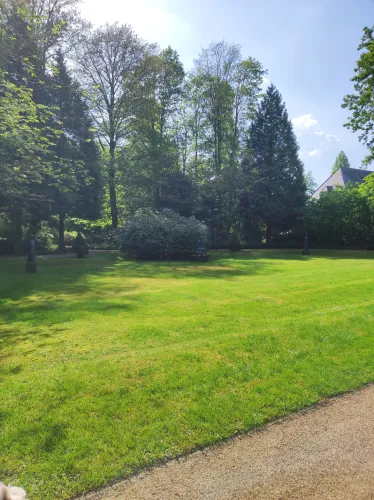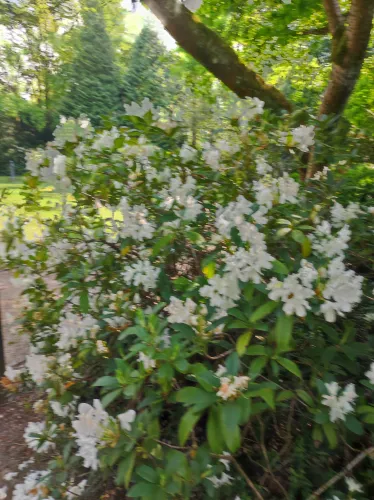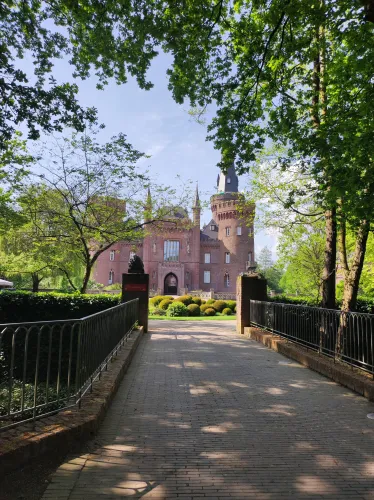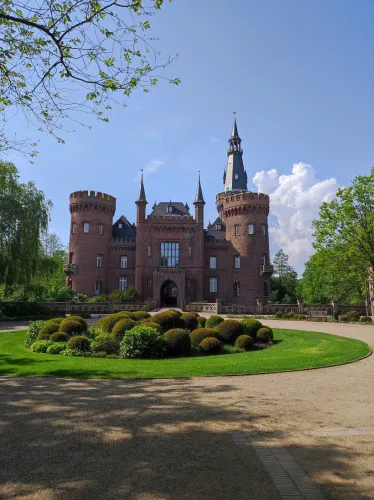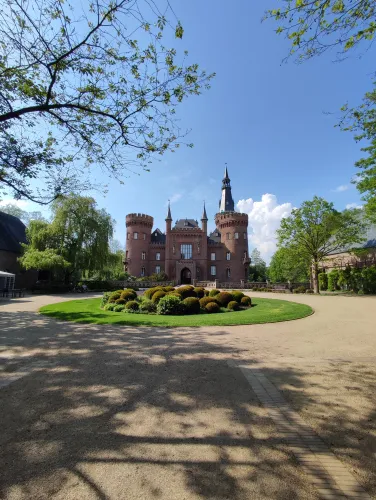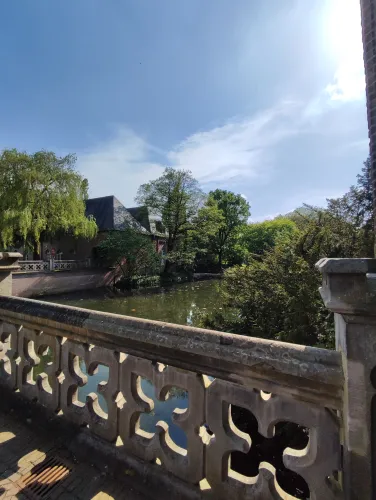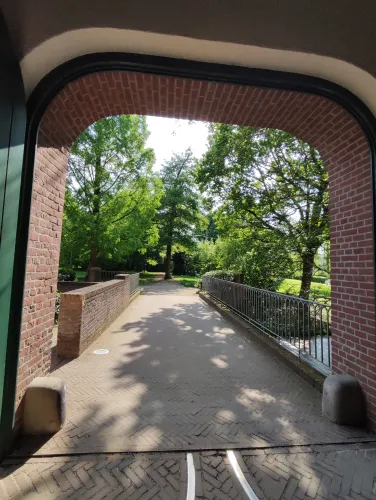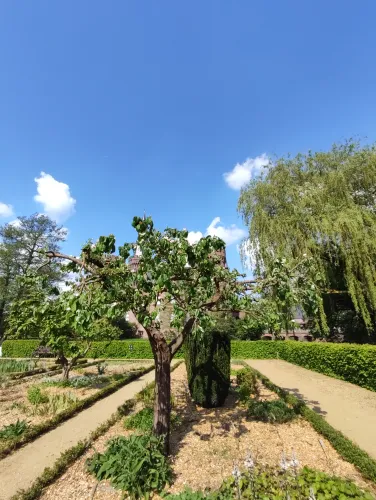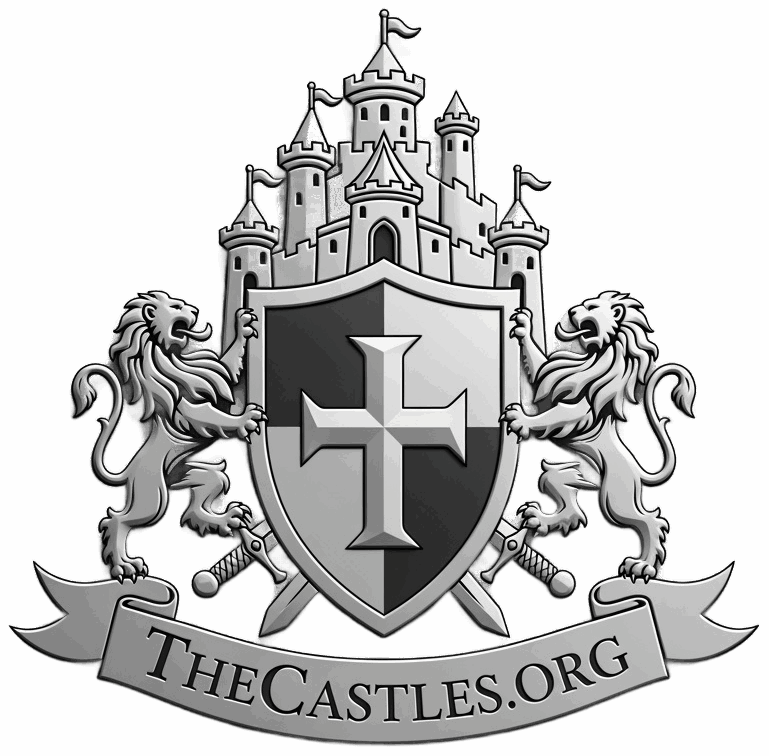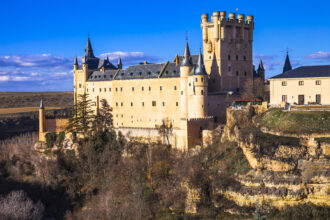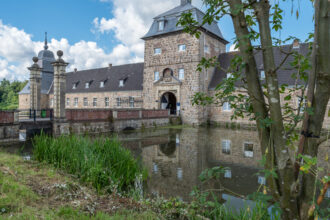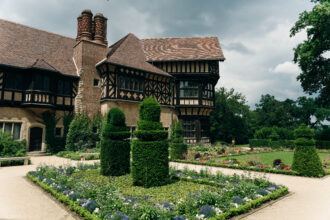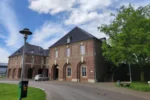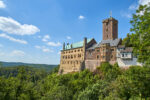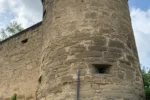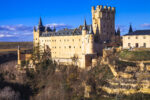One of the most important neo-Gothic buildings in North Rhine-Westphalia is Moyland Castle, whose name is derived from the Dutch word ‘mooi land’, which means ‘beautiful land’ in English. The picturesque moated castle, consisting of a four-winged brick complex with four corner towers, was first mentioned in a document in 1307, when Count Otto von Kleve took a farmstead fortified with ramparts and moats on a hereditary lease from the clergyman Jacob van Egern. After that, there were several changes of ownership until the second half of the 17th century. This only changed in 1695 when Elector Frederick III acquired the complex, which had been converted into a castle. On 11 September 1740, the Prussian King Frederick II and the French philosopher Voltaire met here to found the ‘Wahrheitsmanufaktur’ (truth factory) philosophy academy at the castle. The banister on the staircase leading up to the portal of the main castle with its animal figures commemorates this event. The ‘Pug and Wolf Staircase’ symbolises Voltaire’s visit with the wolf, who was known for his biting wit, and Sir Winston Churchill’s stay during the Second World War on the occasion of Operation Plunder with the pug. In 1766, the castle came into the possession of the Dutch Steengracht family, as Adrian von Steengracht had received it from the Prussian royal family as compensation for loans made during the Seven Years’ War. Under Niklaus Johann von Steengracht, the castle took on its current appearance. Between 1854 and 1862, he had it redesigned in the neo-Gothic style by Cologne cathedral architect Ernst Friedrich Zwirner. Moyland Castle was inhabited by the Steengracht family until 1945. Even then, it was a popular destination for excursions in the Lower Rhine region. In 1990, Baron von Steengracht donated the castle, which had fallen into disrepair after the Second World War, to the Museum Schloss Moyland Foundation, which was established on 11 July 1990. After extensive restoration, the castle and its grounds were opened on 24 May 1997 as a museum for contemporary and modern art. In addition to the former private collection of brothers Hans and Franz Joseph van der Grinten, there is also the Joseph Beuys Archive, an international research institution. It has the world’s largest collection of works by Joseph Beuys. The beautiful, extensive park is remarkable and, like the castle, was reconstructed after the last historical appearance. From July 1995 to May 1997, the castle park was restored in a ‘mixed style’ under the direction of Gustav and Rose Woerner, with old trees and avenues of oak and lime trees. Parts of the ‘English garden’ were combined with those of the ‘architectural garden’. A special highlight of the park are sculptures by artists from all over the world, which make art in public spaces accessible to everyone. In addition to the sculpture park, the park also has a herb garden, which was laid out in 1999 based on the Anholter-Moyländer herb book from 1470 and is home to over 300 native and foreign herbs in 16 individual beds. The park also has the largest collection of hydrangeas in Germany. Here you can marvel at 2,500 plants from over 530 different varieties of hydrangea. Since 2024, Moyländer Park has been part of the European Garden Network.
